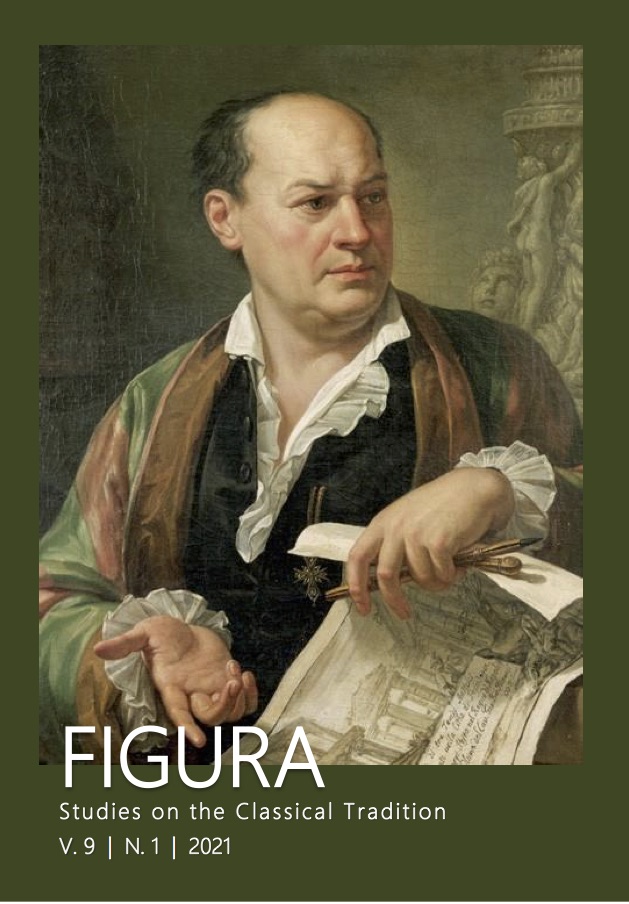Abstract
The article explores the legacy of Pliny the Elder’s Natural History in the angelology of Vincenzo Cicogna (1519? - after 1596), an Italian Catholic reformer who approached Biblical interpretation in search of the harmony between Christianity and pre-Christian philosophical systems. Cicogna’s dedicated his Angelorum et daemonum nomina et attributa... (Los Angeles, Getty Research Institute MS 86-A866, c. 1587) to Cardinal Giulio Antonio Santori (1532–1602), Italy’s Grand Inquisitor, presumably in an attempt to restore the author’s reputation after repeated clashes with the Inquisition. Cicogna’s angel and demon lexicon evoked the mythological Python to explain the origins and limits of the diabolic ability to foresee the future and juxtapose the powers of preaching and fortune-telling. His Christian application of Greek philosophy echoes the ideology of Bishop Gianmatteo Giberti’s (1495-1543) Church reform process, executed with Cicogna’s collaboration.
References
Archivio della Congregazione per la Dottrina delle Fede, Index Protocolli G.
Augustine, Saint: De octo dulcitii quæstionibus liber unus, MIGNE, J.-P. (Ed.) Patrologiae cursus completus, series latina. Vol. 40, Turnhout: Brepols, 1956, cols. 162-65.
BAILEY. Magic And Superstition in Europe: A Concise History from Antiquity to the Present. New York: Rowman and Littlefield, 2007, 106.
BARTLETT. The Mythology Bible: The Definitive Guide to Legendary Tales. New York – London: Sterling, 2009.
BRENZONI. Dizionario di artisti veneti. Firenze: L.S. Olschki, 1972.
BRUGNOLI, Andrea. (Ed.) Annuario Storico della Valpolicella 2003-2004. Verona: Centro di Documentazione per la Storia della Valpolicella, 2004.
CANNING, Raymond (Ed.). The Works of Saint Augustine. A Translation for the 21st Century. Part I: Books, Vol. 12. New York: New City Press, 2008.
Cicogna, Vincenzo. Angelorvm et daemonvm nomina et attribvta passim in divinis scriptvris contenta ad patrvm sententiam explicata ad illvstris et reverendiss ivlivm antonium sanctorivm cardinalem sanctae severinae amplissimvm et de ecclesiastica hierarchia. Getty Research Institute MS 86-A866
CONFORTI, “Villa Del Bene: iconografia e inquietudini religiose nel Cinquecento. Gli affreschi della loggia e dell’Apocalisse”.
DA RE, “I Cicogna dal secolo XVI”. Madonna Verona. Bollettino del Museo Civico di Verona. Verona, 7, 1913.
DE BUJANDA et al. Index de Rome 1590, 1593, 1596: avec étude des index de Parme 1580 et Munich 1582. Québec: Centre d'études de la Renaissance, 1994.
DE LUCA. Archivio italiano per la storia della pieta. Rome: Edizioni di storia e letteratura, 2007.
ESZENYI, On Perfect and Imperfect Angels: A Catholic Reformer’s Angelology from the Late-Sixteenth Century Veneto. .PhD dissertation. University of Kent Canterbury, 2014.
Eszenyi, “Thunderbolt: Shaping the image of Lucifer in the Cinquecento Veneto”. Culture and Cosmos. Bath, 20, 1-2, 2016.
ESZENYI. “Vincenzo Cicogna: A Veronese Angelologist from the Cinquecento”. Studi Veronesi. Verona, 3, 2018, 1-26.
FONSECA. Mediterraneo, Mezzogiorno, Europa: studi in onore di Cosimo Damiano Fonseca. Naples: Liguori, 2000.
FONTENROSE. Python. A Study of Delphic Myth and its Origins. Berkeley and Los Angeles, University of California Press, 1959.
GUZZO, “Il palazzo Del Bene di San Zeno in Oratorio in Verona (e le relazioni di Giovanni Battista Del Bene con alcuni artisti veronesi)”. in
VARANINI, Gian Maria (Ed.) La famiglia Del Bene di Verona e Rovereto e la villa Del Bene di Volargne Rovereto: Accademia Roveretana degli Agiati, 1996.
HUNT. “Serpent (as symbol)”. New Catholic Encyclopedia, 2nd ed., Vol. 13, The Catholic University of America: Washington, D.C, 2003, 18-22.
MCDONALD. Pythons. Minneapolis: Capstone Press, 1996.
OLIVIERI. “Simeone Simeoni ‘filatorio’ di Vicenza (1570): il dibattito su charitas e paupers”. Quaderni di Storia Religiosa. Verona, 2, 1995, 234-236.
OLSZEWSKI, “Praxiteles' ‘Apollo’ and Pliny's ‘Lizard Slayer’”. Notes in the History of Art 31, 2, Winter 2012, 2-9.
RAPHAEL. Jewish Views of the Afterlife. Plymoth: Rowman & Littlefield, 2009, 50-51.
ROGNINI. La chiesa di San Zeno i Oratorio. Guida storico-artistica. Verona, 2004.
TACCHELLA. Il Processo agli eretici veronesi nel 1550. S. Ignazio di Loyola e Luigi Lippomano. Brescia: Morcelliana, 1979.
TUCKER. “Gian Matteo Giberti, Papal Politician and Catholic Reformer. Part II.” The English Historical Review. Oxford, 18 April 1903, 282-284.
TUCKER. “Gian Matteo Giberti, Papal Politician and Catholic Reformer. Part III.” The English Historical Review. Oxford, 18 April 1903, 444-447.
TUCZAY. “Divination by Spirits and Spirit Mediumship in the Middle Ages”. in PÓCS, Éva (Ed.) The Magical and Sacred Medical World. Newcastle Upon Tyne: Cambridge Scholars Publishing, 2019, 158-160.

This work is licensed under a Creative Commons Attribution-NoDerivatives 4.0 International License.
Copyright (c) 2021 Edina Eszenyi

